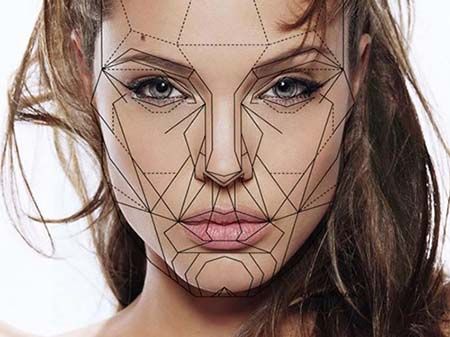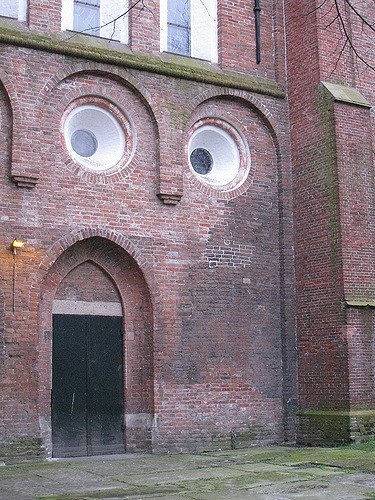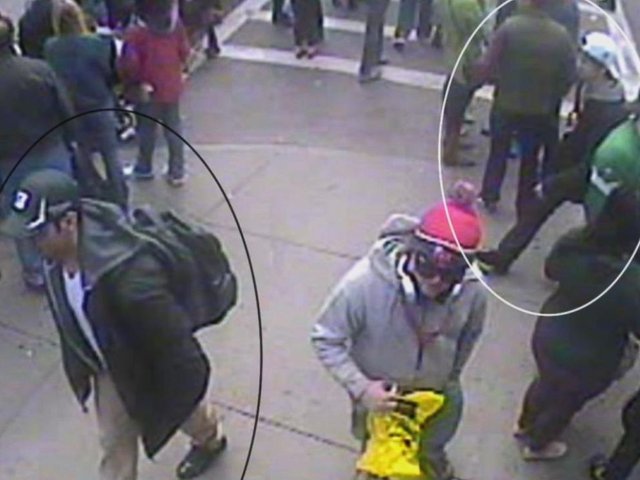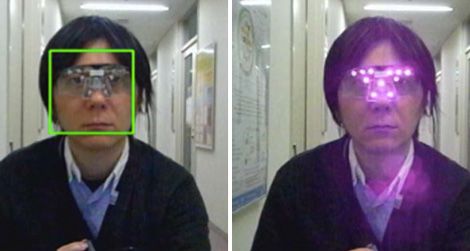I've seen it in the movies, people who can accurately describe the face of the person who attacked them, they were able to create a Facial composite so accurately that at the end of the day they managed to find the person who attacked them in the ten picture they were able to assemble with their memory. Which can remember details of the person who attacked them, To create a whole picture of the face seems to be really illogical. I try to think about it and I would not be able to create my wife's face if I needed to, how did they manage to do it?

Image Credit
I try to understand how we identify people, what information we have on the faces that help us identify them, and what is really special inside and what makes them such a unique stimulus. On the one hand it is a simple stimulus, only eyes, nose, and mouth, and on the other hand, it is very rich in information and there are specific mechanisms in the brain that respond when we see faces. We try to understand what and how they are doing.
History Of Physical Identification
Leonardo da Vinci developed a scientific method for identifying the portrait of a person's face after one look. According to this method, you should look at the lips, chin, and forehead, as these are prominent and unique points that can be remembered for later identification. In 1840, Belgian statistician and sociologist Adolphe Quetelet determined that no one person is identical to another, and each person has external characteristics that are characteristic of him and different from the others. On the basis of this theory, the Frenchman Alphonse Bertillon created a method of identification based on the measurement of the head, ears, legs, chest, and overall height, named after Baronage.The Problem With Eyewitness Identification
Innocent people are sitting in jail. The most common story is the story of Thomson investigating a well-known memory that was accused of being raped because he raped her. To his amazement, Thomson was identified by the raped woman in a properly organized lineup. When Thomson inquired about the circumstances of the rape, he learned that during the rape he participated in a television program about rape and memory distortions. Fortunately for Thomson, he had a solid alibi because the panel on the live television show was none other than the chief of police. So that the rape victim will accompany the trauma she experienced during the rape with the television program she watched and "identified" Thomson as a rapistThree Types Of Face Perception Processing
- Objects - nose, mouth, eyes.
- Spatial - distances between objects.
- Holistic - perception of the whole face.

Different Spatial Elements Are Not Felt In Reverse
At first it looks like a reverse image of 2 women ...
![optik_41_c[1].jpg](https://steemitimages.com/DQmUjgA35etQMNjw8UVZWr3uzHbbMD4Wc1wgbVGjhYGa2BP/optik_41_c%5B1%5D.jpg)
Image Credit
![optik_23_c[1].jpg](https://steemitimages.com/640x0/https://steemitimages.com/DQmNUnxQqmZgZ6Y1x1DiGX9ZeYx6Bs6ueKZo2bwSDUYVzLu/optik_23_c%5B1%5D.jpg)
Image Credit

Psychologist Elizabeth Loftus is investigating memories. More precisely, it investigates false memories, in which people remember things that did not happen or remember them in a different way than they did.
This is more common than you would expect, and Loftus shares some shocking stories and facts with us, raising important ethical questions that we all need to consider.

We tend to believe that our eyes represent a reliable picture of reality, but in reality, the eyes are merely means of transmitting light waves. The person who makes up the picture is the brain - and the brain has its own agenda. One of the ways in which the brain 'arranges' the images is by creating a forecast of what appears, based on our past experience. It throws the existing expectations on everything we look at and intertwines them with the meaning it produces. In this way, the brain can create a clear meaning even from blurry images or poor visibility. On the other hand, this method makes our vision so subjective that in a sense we see what we want to see.
Japanese researchers make it clear how deep the connection we create between objects and people. They found that people follow the 'look' of objects just as we are used to following the gaze of people. For example, if you look at the picture of this surprised building, If tempted to look and see what makes him react in that way.

Image Credit
While these studies explain how the mechanism works, they do not touch the depth of the question - why do we see faces? One possible answer is that we see so many real human faces in everyday life that we expect to see them everywhere. "From childhood, this is the most common stimulus we encounter," Lee says. Another, deeper answer stems from evolutionary reasons. Human survival depends on other people-whether we need help from them or we should beware of them. One has to understand other people and decipher their behavior at high speed so the brain may be wired to identify other people at every opportunity: the accidental mistake of recognizing a fake face in a tree trunk is not as severe as failing to recognize a real face hiding in the bushes.

Who's watching who? - Image Credit
A similar mechanism may also work in spirituality. The brain tries to cast its human qualities on things that are not necessarily human according to the accepted definitions. In fact, in an attempt to deal with the uncertainty of the world, We do personification various phenomena and looking for the reflection in nature.
The reason we locate faces in many different places can be related to how the brain decodes information based on existing information - and it may lie in a deep evolutionary nature. Whatever the reason, it stems from within and we must know ourselves well to get to the bottom of it. In other words, to rely on what we see outside, it is worth first to peek inside.

What about people whose job it is to recognize faces? Border control officers, for example.
On the face it sounds trivial, you just have to compare the face of the picture to the face in front of you, but actually, it's complicated. Recently, they really did research among Australian border policemen, and when they tested their ability, they simulated what they were doing at work. In practice, they saw that they were making a lot of mistakes. 14% of people were not identified, 6% thought they were different people even though it was the same person.
And what about the passport picture was taken eight years ago?
The ability to recognize is not something that improves over time. A passport examiner who has been working for 30 years has no improved abilities compared to the examiner who has just started working. They think identifying faces is easy because most of what we do all day is to identify people we know. We are not really required to recognize faces we do not know.
So the idea is that we need a kind of "tail" or a tag in addition to the face so we can remember it. Even if our visual system is exposed to a multitude of faces, we simply do not know how to distinguish between them. To remember faces and distinguish between them we need some tag. Identifying the faces actually requires two opposite things from us.
On the one hand, distinguish between a multitude of different faces. On the other hand, to generalize, that is - to look at many different images of the same person, different angles, and different settings, and understand that it is the same person. With unfamiliar faces, it is very difficult to make this generalization.
If I show you a lot of different pictures of a person you do not know, you will mistake them for different people. With a familiar face, it will not happen to you.
Let's Talk About Prosopagnosia - The Total Inability To Recognize Faces.
Prosopagnosia is a tremendous difficulty. This is a severe social disability. Identifying the faces is very critical to us as social animals. We do not give it any thought because it seems natural and obvious to us.
Image Credit
I read a very good illustration of prosopagnosia: imagine that you are coming to take your child from school. You go into the classroom and a lot of kids are in front of you, all dressed the same way and they all have the same face.
We hear about people who go to kindergarten or class to take their child and they wait to see who will run to them. It's a terrible feeling. All our lives we actually communicate with people on the basis that we recognize them and know who they are. It is very difficult to live without being able to recognize faces. Prosophagnes use other cues - identifying by walking, by voice, or according to body measurements.
It is not necessarily derived from brain injury.
It is estimated that 2% of the population is simply born like this. Research on this is still young, only 15 years old. What's interesting is that these people have suffered this whole life, but have not understood exactly what they have. Unlike, for example, dyslexia, where you know that you can not read but the child sitting next to you in the classroom does succeed, it is very difficult to grasp what is prosopagnosia. You do not know and can not figure out what your problem is. Some thought they had a social problem, and of course, it also exists, because it affects your personality. Consider how it is to get to work every day and not recognize your colleague.
In fact, it was only after discovering the phenomenon of blindness that the faces realized that there was a specific area of the brain responsible for this. In the 1940s, people who had a lesion on the right side of the brain found it hard to recognize faces. One area was discovered in 1997 by Nancy Kanwisher. She told Ted in a talk about how she had discovered him-she just lay in her nose for hours. MRI showed herself faces.
There have been previous studies that indicated the feasibility of such an area, and it has done very elegant and beautiful studies to rule out alternative hypotheses, such as whether this region may respond to body parts in general and not just to faces. In the end, the area was discovered, thousands of articles were written on it, and later it became clear that there were additional areas involved in identification. Recently, by the way, we began to show subjects also faces, not just pictures, and we discovered other areas that react to the stimulus of faces in motion and did not respond to static faces.
We perceive the face as a whole, right? I can recognize you in the picture, but if they see the organs inside me separately, I will not know the associate. This is also why we find it difficult to identify the opposite face in the picture because then we examine the nose and mouth and eyes separately.

What about facial recognition technologies?
Facebook, for example, claims that their algorithm recognizes a better face than humans.
In recent years, the rate of error is similar, and in some cases, the systems even identify better than human identification when it comes to identifying unfamiliar faces because unlike us, they can scan and analyze a large number of images. With familiar faces, people make far fewer errors than algorithms, and for the sake of algorithms, they strive. Again, the point is that we use more information, which means that the visual system alone is not enough to identify people at the highest level possible.
The blind spot of computational systems is that they do not have the additional knowledge.
Look at what happened with the suspects in the Boston marathon. The system was unable to identify the suspects' photographs taken in the street, even though they were in the database. The one who recognized them at the end was their aunt, and she recognized them because she knew them. Because of the glasses and the hat, she could not recognize the face, but from the way they stood, from the differences in height between them, she added all the clues and understood what they were talking about. Again, when you know the person it is easy to identify him. That the computational system just can not do.

This technology is progressing, talking to us about how in the future we will be able to pass through the airport on the basis of our interior, But it is still limited, depends on our cooperation, is not it?
Less and less. The first systems had to scan faces in a certain position, as they would for a passport photo, in a certain light, when you look directly at the camera and not smile, etc. Today the challenge is to identify you when you look sideways, for example.
Today everyone is uploading Selfie pictures of themselves, which is exactly what these systems need.
These systems need first and foremost a lot of images, and that's there. People photograph themselves to know. I do not know if the Salafi is exactly what they need because, in my opinion, it is a bit deformed. In any case, these systems are very much improving. They can recognize you even if you look sideways.

Image Credit
How those concerned about privacy can outsmart them
You can close your eyes, to put sunglasses, Grow a beard, But the truth is that it is becoming increasingly complex to trick them. Some makeup artists have developed special methods to paint the face that make it difficult for algorithms to locate the facial organs. Recently a Japanese company has developed special glasses that project light around the eyes, which is confusing to the algorithm. But even that will get worse in the end. In the future, in my estimation, if we want to avoid automatic detection, we'll just have to wear a burqa.





Until next time, thank you for visiting @nirgf
Feel free to leave a comment below!
Pretty interesting and in-depth explanation of how we humans take in visuals.
Downvoting a post can decrease pending rewards and make it less visible. Common reasons:
Submit
That's why I was looking for material and writing this post,
This subject interested me too.
Thank you @tonygreene113
Downvoting a post can decrease pending rewards and make it less visible. Common reasons:
Submit
This article is impressive you haven't left anything ... I'm glad you talked about prosopagnosia and how we take face recognition for granted
I liked the historical part too.. thanks a lot
Downvoting a post can decrease pending rewards and make it less visible. Common reasons:
Submit
I particularly liked your comment
Thank you @lifeaef
Downvoting a post can decrease pending rewards and make it less visible. Common reasons:
Submit
This is very informative, well done @nirgf
Downvoting a post can decrease pending rewards and make it less visible. Common reasons:
Submit
Thanks I appreciate it very much
Downvoting a post can decrease pending rewards and make it less visible. Common reasons:
Submit
Another informative post.
One thing to add:
"Another, deeper answer stems from evolutionary reasons. Human survival depends on other people-whether we need help from them or we should beware of them. One has to understand other people and decipher their behavior at high speed so the brain may be wired to identify other people at every opportunity: the accidental mistake of recognizing a fake face in a tree trunk is not as severe as failing to recognize a real face hiding in the bushes."
Pareidolia
Downvoting a post can decrease pending rewards and make it less visible. Common reasons:
Submit
Humans are experts in facial recognition. This special skill is a survival evolutionary necessity.
We are able to identify a face that we saw once on the street,
to classify by facing the people who endanger us and by facial expressions to get a great deal of information about the person.
Downvoting a post can decrease pending rewards and make it less visible. Common reasons:
Submit
Good quality blog post!
I want to provide lots of value on Steemit as well. Therefore, I now started writing here on this platform about artificial intelligence. Check out my latest blog post --> https://steemit.com/technology/@martinmusiol/understanding-artificial-intelligence-blog-post-3-how-does-ai-identify-objects-in-images
I follow you know, resteemed and liked your post.
Best,
@martinmusiol
Downvoting a post can decrease pending rewards and make it less visible. Common reasons:
Submit
I'm glad you like my post
Thank you
Downvoting a post can decrease pending rewards and make it less visible. Common reasons:
Submit
Oh wow, this was such an interesting read @nirgf. Great job!
Downvoting a post can decrease pending rewards and make it less visible. Common reasons:
Submit
Thank you very much, I am more than happy to hear that @sharoonyasir
Downvoting a post can decrease pending rewards and make it less visible. Common reasons:
Submit
WOW thanks for writing this very interesting article. Thank you for your support, I'm following you now
Downvoting a post can decrease pending rewards and make it less visible. Common reasons:
Submit
Thank you very much for the compliment and for continuously supporting the works.
It is much appreciated!
I hope so.…
Downvoting a post can decrease pending rewards and make it less visible. Common reasons:
Submit
Now that's what I call an in-depth analysis. The human perception is a fascinating topic indeed. This was informative and well written, thank you.
Downvoting a post can decrease pending rewards and make it less visible. Common reasons:
Submit
Thank you for this
Downvoting a post can decrease pending rewards and make it less visible. Common reasons:
Submit
Congrats!
Downvoting a post can decrease pending rewards and make it less visible. Common reasons:
Submit
Thank you very much @emilygiovanna
Downvoting a post can decrease pending rewards and make it less visible. Common reasons:
Submit
Bro how do you even manage to write such big big posts in a day.
Downvoting a post can decrease pending rewards and make it less visible. Common reasons:
Submit
Every post like this takes me two days to write
Downvoting a post can decrease pending rewards and make it less visible. Common reasons:
Submit
Alright. I can understand.
Downvoting a post can decrease pending rewards and make it less visible. Common reasons:
Submit
This post has received a 0.17 % upvote from @drotto thanks to: @banjo.
Downvoting a post can decrease pending rewards and make it less visible. Common reasons:
Submit
great post, like your post, thanks for sharing
Downvoting a post can decrease pending rewards and make it less visible. Common reasons:
Submit
Thank you very much, I like compliments
Downvoting a post can decrease pending rewards and make it less visible. Common reasons:
Submit
Congratulations! This post has been upvoted from the communal account, @minnowsupport, by nirgf from the Minnow Support Project. It's a witness project run by aggroed, ausbitbank, teamsteem, theprophet0, someguy123, neoxian, followbtcnews/crimsonclad, and netuoso. The goal is to help Steemit grow by supporting Minnows and creating a social network. Please find us in the Peace, Abundance, and Liberty Network (PALnet) Discord Channel. It's a completely public and open space to all members of the Steemit community who voluntarily choose to be there.
If you would like to delegate to the Minnow Support Project you can do so by clicking on the following links: 50SP, 100SP, 250SP, 500SP, 1000SP, 5000SP. Be sure to leave at least 50SP undelegated on your account.
Downvoting a post can decrease pending rewards and make it less visible. Common reasons:
Submit
Great post thanx for sharing
Downvoting a post can decrease pending rewards and make it less visible. Common reasons:
Submit
Thank you very much, I'm Glad you're visiting me
Downvoting a post can decrease pending rewards and make it less visible. Common reasons:
Submit
Nice post
Downvoting a post can decrease pending rewards and make it less visible. Common reasons:
Submit
Thank you @caspady
Downvoting a post can decrease pending rewards and make it less visible. Common reasons:
Submit
Nice post
Downvoting a post can decrease pending rewards and make it less visible. Common reasons:
Submit
Thank you - Visit more dear friend
Downvoting a post can decrease pending rewards and make it less visible. Common reasons:
Submit
well researched .... really informative...
Downvoting a post can decrease pending rewards and make it less visible. Common reasons:
Submit
I'm glad you liked it
Thank you very much for your visit, dear friend
Downvoting a post can decrease pending rewards and make it less visible. Common reasons:
Submit
This post is sponsored by @appreciator in collaboration with #steemitbloggers. Keep up the good work
Downvoting a post can decrease pending rewards and make it less visible. Common reasons:
Submit
Thank you so much. This is truly invigorating! So glad to be a part!
Downvoting a post can decrease pending rewards and make it less visible. Common reasons:
Submit
Yesssssssss man. 🍌🍌🍌🍌🍌🍌
Downvoting a post can decrease pending rewards and make it less visible. Common reasons:
Submit
Thanks bro :)
Downvoting a post can decrease pending rewards and make it less visible. Common reasons:
Submit
Wow great post a lot of information 👍👍👍
Check my blog a lot of new posts please read two important for me I want share it with you
2)https://steemit.com/introduceyourself/@justynatina/i-want-share-my-story-he-try-rob-me-with-weapon-in-hand
I hope you will read it @nirgf let me know
With love Tina ❤
Downvoting a post can decrease pending rewards and make it less visible. Common reasons:
Submit
Thank you, I will go to your blog
Downvoting a post can decrease pending rewards and make it less visible. Common reasons:
Submit